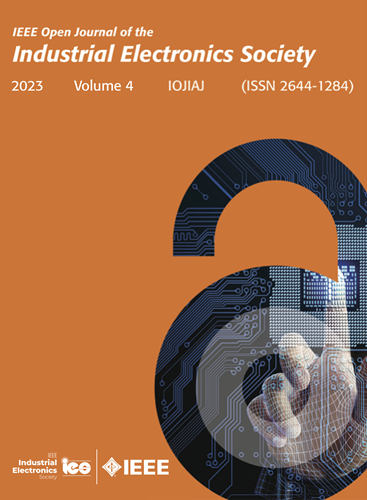基于本征共振和耦合电感的高效光伏功率优化器
IF 7.2
1区 工程技术
Q1 AUTOMATION & CONTROL SYSTEMS
引用次数: 0
摘要
通过共振降低开关损耗是提高太阳能优化器效率的有效途径。事实上,与传统的转换器相比,如果去除配置中不必要的元素,基于共振的太阳能优化器可以以较低的成本提供相当高的可靠性和效率。本文介绍了一种新型的光伏升压功率优化器,该优化器基于变换器电感与MOSFET输出电容之间的共振,从而降低了MOSFET的开关损耗。与采用附加元件利用系统谐振的传统方法相比,该方法降低了变换器的成本。在所提出的变换器中,当其上的谐振电压达到零或最小值时,MOSFET导通;因此,开关损耗显著降低。此外,所提出的升压功率优化器在临界导通模式(CRM)下工作,以减少开关损耗。除了降低MOSFET的开关损耗外,还降低了包括电感铜损耗、二极管导通损耗和MOSFET导通损耗在内的其他损耗,从而大大提高了变换器的效率。通过实验验证了该方法的有效性。实验结果表明,升压功率优化器的效率高达98%。本文章由计算机程序翻译,如有差异,请以英文原文为准。
High-Efficient Photovoltaic Power Optimizer Based on the Intrinsic Resonance and Coupled Inductors
Reducing switching losses through resonance is an effective way to improve the efficiency of a solar power optimizer. In fact, in comparison with the traditional converters, the resonance-based solar power optimizer can offer considerable reliability and efficiency at reduced cost if unnecessary elements in its configuration are removed. In this article, a new photovoltaic boost power optimizer is introduced based on the resonance between the converter inductor and the output capacitance of the MOSFET leading to a reduction in the switching losses of the MOSFET. Using this method, the cost of the converter decreases compared with traditional methods that employ additional elements to use the resonance in the system. In the proposed converter, the MOSFET is switched on when the resonant voltage across it reaches zero or a minimum value; therefore, the switching losses decrease significantly. Also, the proposed boost power optimizer operates in a critical conduction mode (CRM) to decrease the switching losses. In addition to the reduction of MOSFET switching losses, other losses consisting of inductor copper loss, diode conduction loss, and conducting loss of MOSFET are reduced so that converter efficiency increases considerably. The proposed technique is experimentally validated using a prototype. Experimental results demonstrated that the efficiency of the boost power optimizer is as high as 98%.
求助全文
通过发布文献求助,成功后即可免费获取论文全文。
去求助
来源期刊

IEEE Transactions on Industrial Electronics
工程技术-工程:电子与电气
CiteScore
16.80
自引率
9.10%
发文量
1396
审稿时长
6.3 months
期刊介绍:
Journal Name: IEEE Transactions on Industrial Electronics
Publication Frequency: Monthly
Scope:
The scope of IEEE Transactions on Industrial Electronics encompasses the following areas:
Applications of electronics, controls, and communications in industrial and manufacturing systems and processes.
Power electronics and drive control techniques.
System control and signal processing.
Fault detection and diagnosis.
Power systems.
Instrumentation, measurement, and testing.
Modeling and simulation.
Motion control.
Robotics.
Sensors and actuators.
Implementation of neural networks, fuzzy logic, and artificial intelligence in industrial systems.
Factory automation.
Communication and computer networks.
 求助内容:
求助内容: 应助结果提醒方式:
应助结果提醒方式:


